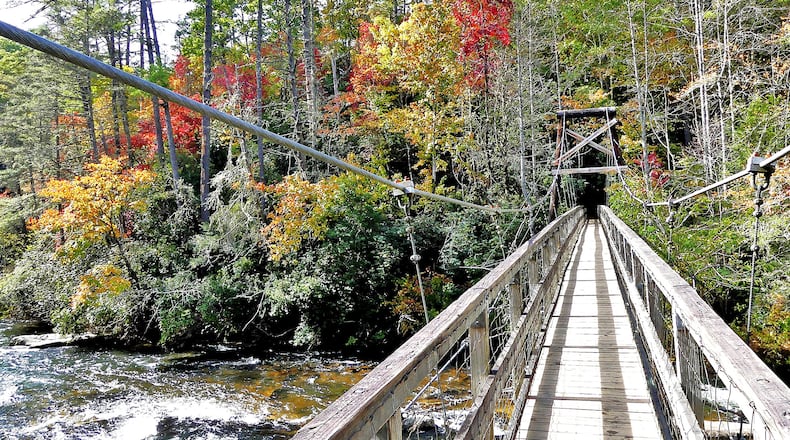Some 40 years ago, a small group of avid Appalachian mountain hikers drew up a bold plan: They would build a new hiking trail through some of the remotest and most splendid mountain backcountry in Georgia, North Carolina and Tennessee.
It would begin at Springer Mountain in North Georgia’s Fannin County, the same spot from which the famed Appalachian Trail starts. But the new trail would wind westward and go through six federally protected wilderness areas as well as the Great Smoky Mountains National Park.
The group called itself the Benton MacKaye Trail Association, named for the Harvard-educated forester who founded the Appalachian Trail in the 1920s. The new Benton MacKaye Trail (BMT), in fact, would follow part of the Appalachian Trail’s original route before it was rerouted.
The 288-mile-long BMT was completed in 2005 — and now offers breathtaking views of superb mountain vistas, rushing waterfalls and secluded old-growth forests.
I was thinking about all of this on an apple-crisp day last week as I walked a section of the BMT that includes one of the trail’s best-known landmarks, the famed “swinging bridge” over the rugged Toccoa River in Fannin County.
The Benton MacKaye Trail Association now wants to take the BMT to a new level: It has asked Congress to officially designate the BMT as the nation’s 12th “National Scenic Trail.” “It will put the BMT into a different league,” said Ken Cissna, the association’s president. National scenic trails, he noted, are intended to showcase the nation’s spectacular natural resources and beauty.
A federal designation also could bring with it funding and other resources to help protect and maintain the trail — although volunteers with the 730-member trail association will continue to do the BMT’s upkeep and maintenance.
For more information, go to bmta.org.
IN THE SKY: From David Dundee, Tellus Science Museum astronomer: The North Taurid Meteor Shower, visible all next week, peaks at about 15 meteors per hour on Thursday night in the eastern sky.
The moon will be first quarter on Thursday. Venus is high in the west at dusk and will appear near the moon on Sunday. Jupiter and Saturn are in the west at dark; Saturn will appear near the moon on Wednesday and Jupiter will do so on Thursday.
Charles Seabrook can be reached at charles.seabrook@yahoo.com.
About the Author
The Latest
Featured

